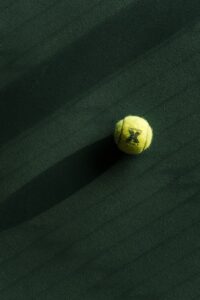Maximize Your Game: Tips for Checking Your Padel Balls for Damage
3 min read
Maximize Your Game: Tips for Checking Your Padel Balls for Damage
Introduction
Welcome, padel enthusiasts! Nothing beats the excitement of a fast-paced game on the court, but have you ever stopped to consider the condition of your padel balls? Checking your balls for wear and tear is crucial to ensure a consistent and enjoyable playing experience. In this article, we’ll explore some helpful tips on how to check padel balls for wear and tear, so you can maximize your game and stay ahead of the competition!
The Importance of Padel Ball Maintenance
Let’s face it; padel balls face some serious wear and tear during a game. From constant hits against the floor, walls, and racquets, they can easily lose their bounce and affect the overall quality of your game. This is why it’s essential to regularly examine and maintain your padel balls.
By taking good care of your balls, you can prolong their lifespan and save on replacement costs. Moreover, playing with well-maintained balls enhances accuracy, power, and precision during your shots. Ready to learn some valuable tips for assessing the condition of your padel balls? Let’s dive in!
1. The Squeeze Test
An easy way to check the integrity of your padel balls is by using the squeeze test. Simply hold the ball between your thumb and fingers and give it a gentle squeeze. If the ball feels too soft and doesn’t regain its shape quickly, there’s a good chance it’s worn out and needs replacing.
Ideally, padel balls should have a certain level of firmness. They should resist compression slightly but not be too hard either. So, performing the squeeze test regularly will help you identify if any balls have lost their bounce and should be retired from your collection.
2. The Bounce Test
The second method to evaluate the health of your padel balls is through the bounce test. Find a clean, flat surface such as a court and drop the balls from waist height. Observe how high they bounce back.
If the balls bounce back properly, reaching a respectable height, it’s a good sign that they are still in good condition. However, if they fail to rebound with vigor or bounce unevenly, this indicates that they have suffered wear and tear and may need to be replaced.
3. The Visual Inspection
A visual inspection is an essential step in assessing padel ball damage. Give your balls a thorough once-over, looking for visible signs of wear, such as scratches, cracks, or color fading. This is especially important if you play on courts with rough surfaces, as they can be particularly harsh on the balls.
Additionally, check for any deformities or changes in the roundness of the balls. If they appear misshapen or lopsided, it’s a clear indication that they have seen better days and are no longer suitable for optimal gameplay.
Conclusion
Now that you know how to check padel balls for wear and tear, you can confidently ensure that you’re always playing with the best-quality equipment. By regularly performing the squeeze test, bounce test, and visual inspection, you can stay ahead of any potential issues and continue to enjoy the game at its fullest.
Remember, maintaining your padel balls is crucial in maximizing your gameplay experience. So, make it a habit to check your balls before every match or practice session, and don’t hesitate to retire worn-out balls for new ones!
With these tips in your arsenal, you’ll always be on top of your padel game. See you on the court, and may every match be as thrilling as the last!






